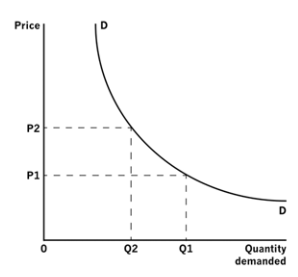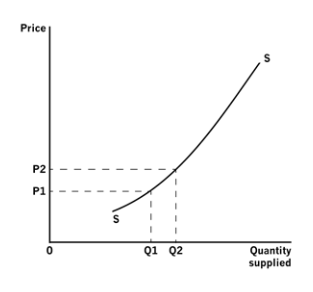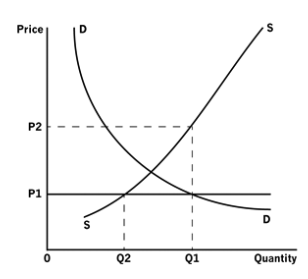What is microeconomics?
Microeconomics is a part of economics that contemplates the traits of the decision-makers within the economy such as households, individuals, and enterprises. The term ‘firm’ is usually used to refer to all sorts of trades. Microeconomics is different from the study of macroeconomics that considers the economy as an entity.
Concepts covered under microeconomics
Dearth, choice, and opportunity cost: The manifesto on which the microeconomics notion is built reclines at the very heart of economic reasonability of how the decision-makers pick between scanty resources that have substitute uses. The customers demand goods and services and the producers offer these for sale, but none of the individuals can acquire everything they require from the economic system.
Price mechanism: A prime part of the study of microeconomics is committed to the investigation of how prices are determined in the marketplace. Manufacturers and customers initiate forces that we term them as supply and demand accordingly, and it is their interaction within the marketplace that devises the price mechanism.
Demand: Demand is initiated by the needs of the customers. The nature of demand incurs much to the basic worth that customers discern the goods or services to possess. The degree of demand for the goods or services is determined by various factors such as
- Price of goods or services
- Price of other goods and services, alternatives, and contingents
- Emoluments
- Tastes and proclivity
- Expectations
Also, read: Introduction to Microeconomics
Demand Curve

Supply: Supply refers to the number of goods and services offered to the marketplace by the manufacturers. We can delineate the association between the quantity demanded and the price. We can also contemplate the link between the quantity supplied and the price.
Supply Curve

Elasticity: The concept of elasticity is solicited with the receptivity of quantity demanded or quantity supplied to a variation in price. If a minute variation in price brings about an enormous change in the quantity demanded, then the price elasticity of demand is said to be highly elastic. On the contrary, if a variation in price has a minute or no effect on the quantity demanded, then the demand is said to be highly inelastic.
Additional Reading: Difference between Microeconomics and Macroeconomics
Equilibrium: Presuming that all the determinants of supply and demand are to be persistent except the price, an enterprise will manufacture where the supply curve converges the demand curve.

Market intervention: In capitalist structures, authorising markets to handle freely is contemplated to be advantageous but it is a predominantly agreed fact that market forces cannot be allowed to operate for all the goods and services obligatory by the community. Some goods and services are termed as ‘public goods and services’, which means that they can only be furnished sufficiently by the market intervention
Maximum Price

Theory of a firm or an enterprise: The theory of an enterprise is a branch of microeconomics that scrutinises the distinct ways in which the entities within an industry may be organised and pursued to procure lessons from these substitute structures.
The mentioned concepts are covered under the topic microeconomics. To know more about such interesting concepts, stay tuned to BYJU’S.
| Important Topics in Economics: |
Comments